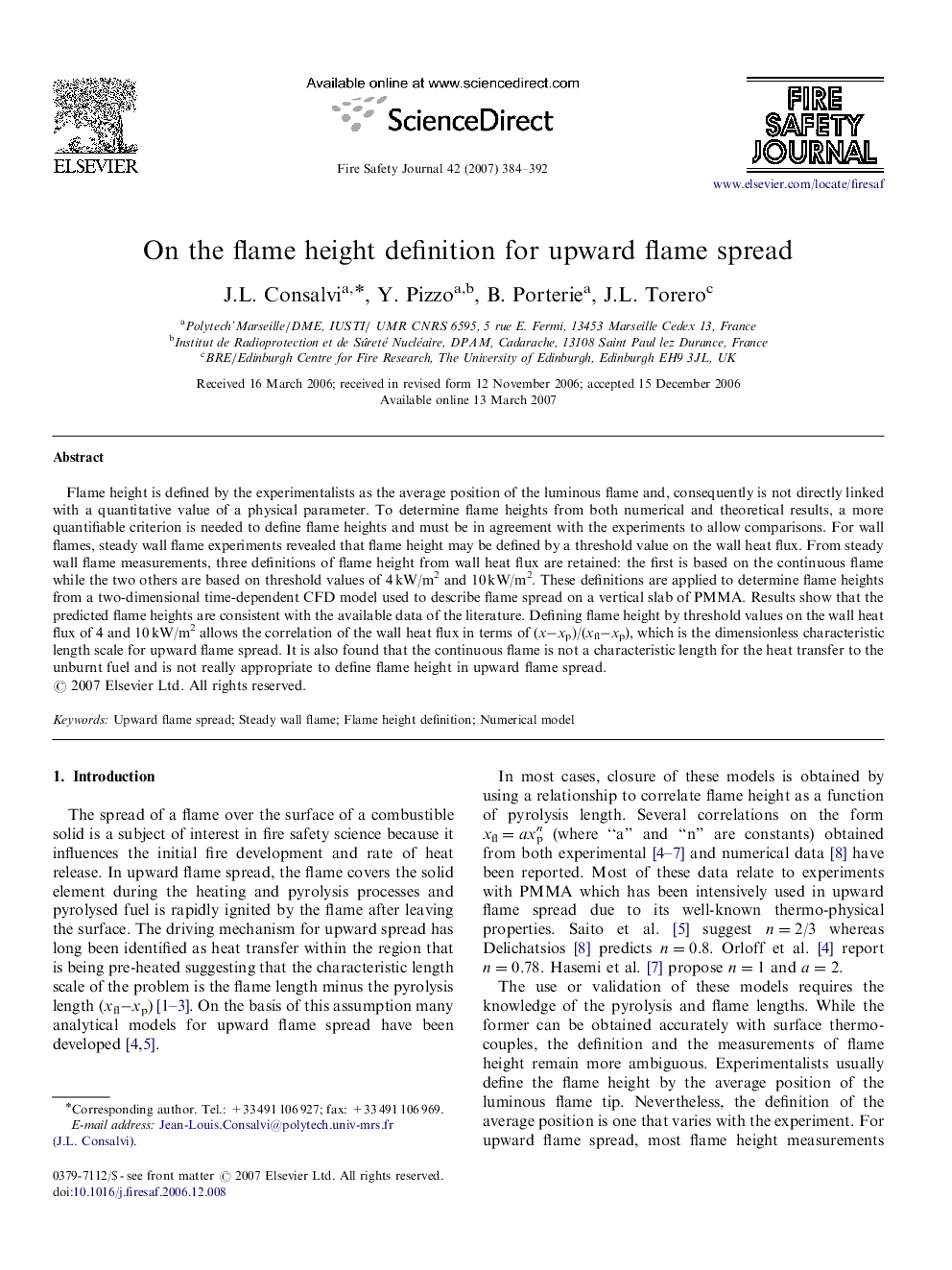| Article ID | Journal | Published Year | Pages | File Type |
|---|---|---|---|---|
| 270595 | Fire Safety Journal | 2007 | 9 Pages |
Flame height is defined by the experimentalists as the average position of the luminous flame and, consequently is not directly linked with a quantitative value of a physical parameter. To determine flame heights from both numerical and theoretical results, a more quantifiable criterion is needed to define flame heights and must be in agreement with the experiments to allow comparisons. For wall flames, steady wall flame experiments revealed that flame height may be defined by a threshold value on the wall heat flux. From steady wall flame measurements, three definitions of flame height from wall heat flux are retained: the first is based on the continuous flame while the two others are based on threshold values of 4 kW/m2 and 10 kW/m2. These definitions are applied to determine flame heights from a two-dimensional time-dependent CFD model used to describe flame spread on a vertical slab of PMMA. Results show that the predicted flame heights are consistent with the available data of the literature. Defining flame height by threshold values on the wall heat flux of 4 and 10 kW/m2 allows the correlation of the wall heat flux in terms of (x−xp)/(xfl−xp), which is the dimensionless characteristic length scale for upward flame spread. It is also found that the continuous flame is not a characteristic length for the heat transfer to the unburnt fuel and is not really appropriate to define flame height in upward flame spread.
